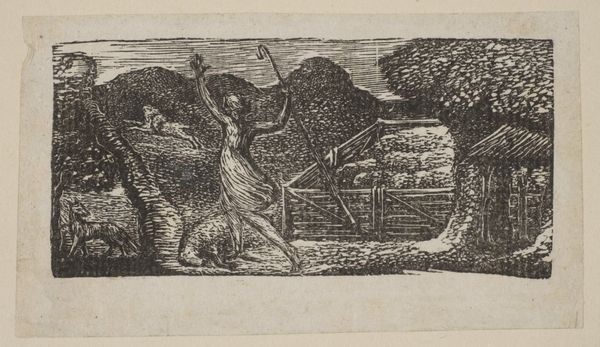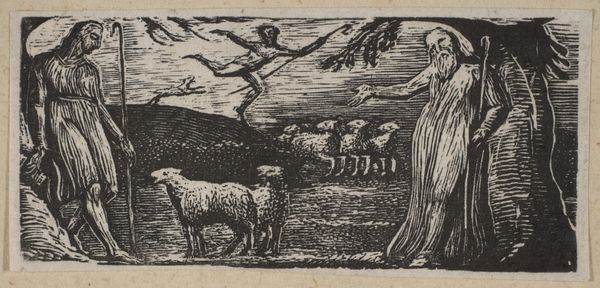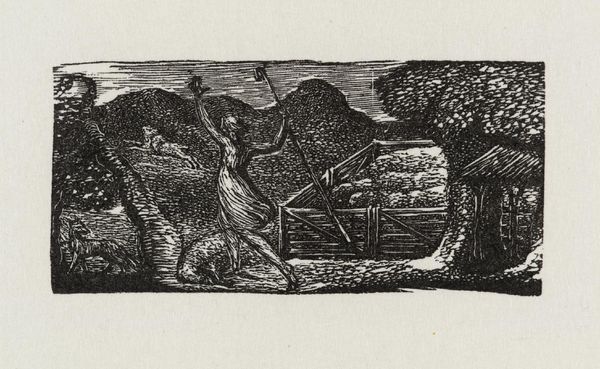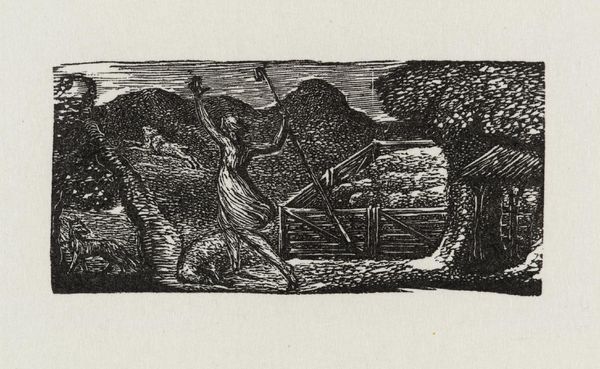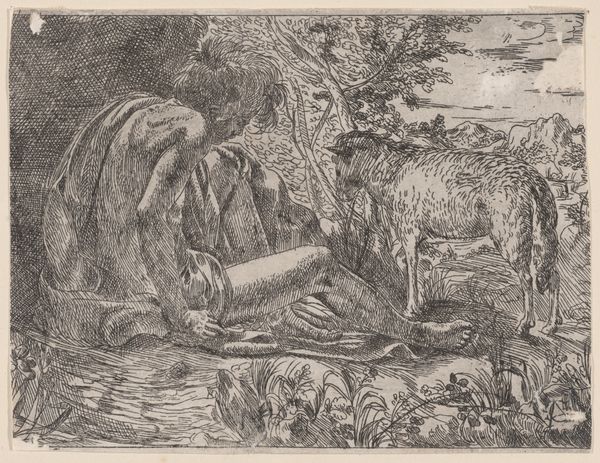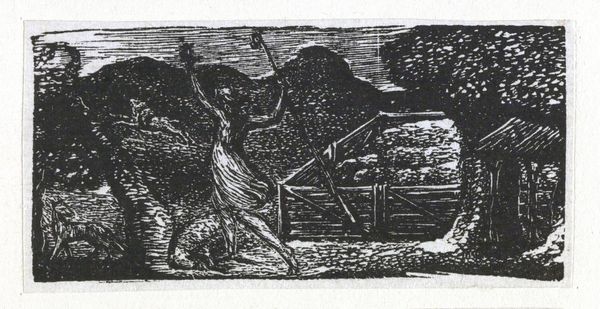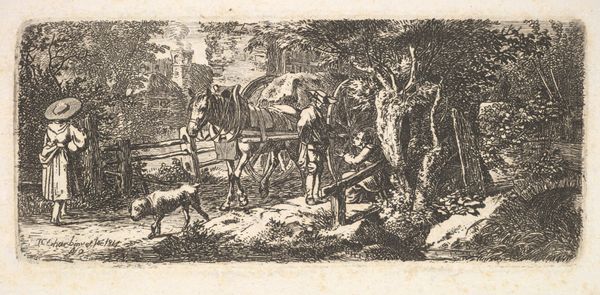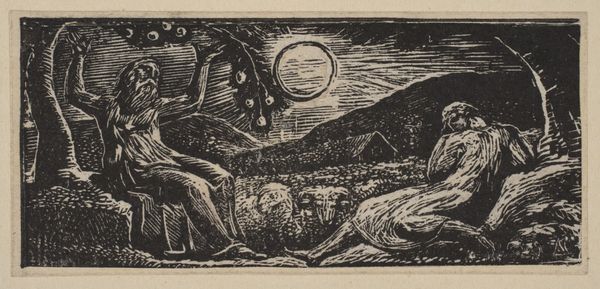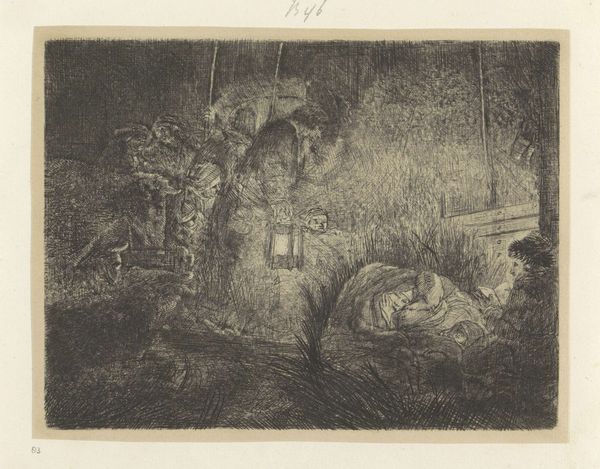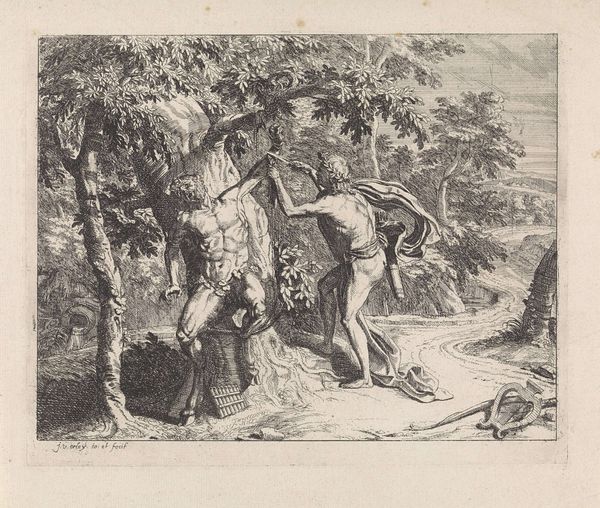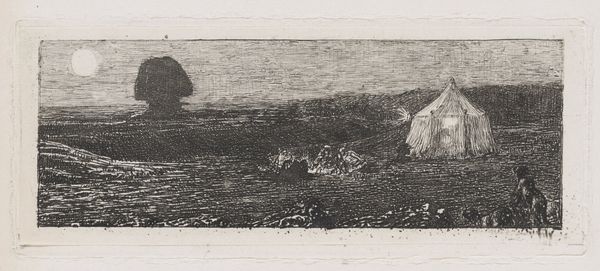
Shepherd Chases Away a Wolf, from Thornton's "Pastorals of Virgil" 1821
0:00
0:00
drawing, print, etching, engraving
#
drawing
#
narrative-art
# print
#
etching
#
landscape
#
figuration
#
romanticism
#
genre-painting
#
engraving
Dimensions: block: 1 3/8 x 2 7/8 in. (3.5 x 7.3 cm)
Copyright: Public Domain
Editor: We're looking at William Blake's etching, "Shepherd Chases Away a Wolf, from Thornton's 'Pastorals of Virgil'," created in 1821. It’s striking how the stark black and white contrast creates such a dramatic scene. What details stand out to you from a formal perspective? Curator: The formal dynamism is certainly compelling. Note the engraver’s burin has produced angular lines which disrupt the possibility of spatial unity. See how the shepherd's flailing pose cuts across the landscape rather than inhabiting it. How might we understand this rejection of pictorial space? Editor: So you're suggesting the composition, instead of creating depth, emphasizes the surface and flatness of the print itself? Curator: Precisely. Consider the shepherd, his exaggerated limbs are not so much those of a defender, but an embodiment of pure energy, the very picture of ecstatic propulsion rendered in stark graphic form. The surrounding forms barely coalesce, so fragmented, in fact, it recalls early woodcuts in their almost expressionist approach to defining tone, light, and form. Editor: It's like the narrative is secondary to the sheer visual force. The lack of shading and defined form directs attention away from pure representation toward…what, exactly? The act of creation itself? Curator: Indeed. This print eschews traditional perspective and mimetic representation. Instead, we observe the inherent qualities of line and contrast – a focus, if you will, on the materiality of art itself. The crude hatching directs the viewer towards recognizing not the represented scene, but a demonstration in applied graphic capabilities. Editor: That's a really fascinating way to see it. I initially saw just a simple scene of protection, but now I see it's a commentary on the potential of printmaking. Curator: My purpose is to always remember that in many works of this era, there is a deeper level to the work in question that escapes the first encounter. Hopefully you, too, have broadened your field of vision for approaching such images from now on.
Comments
No comments
Be the first to comment and join the conversation on the ultimate creative platform.
